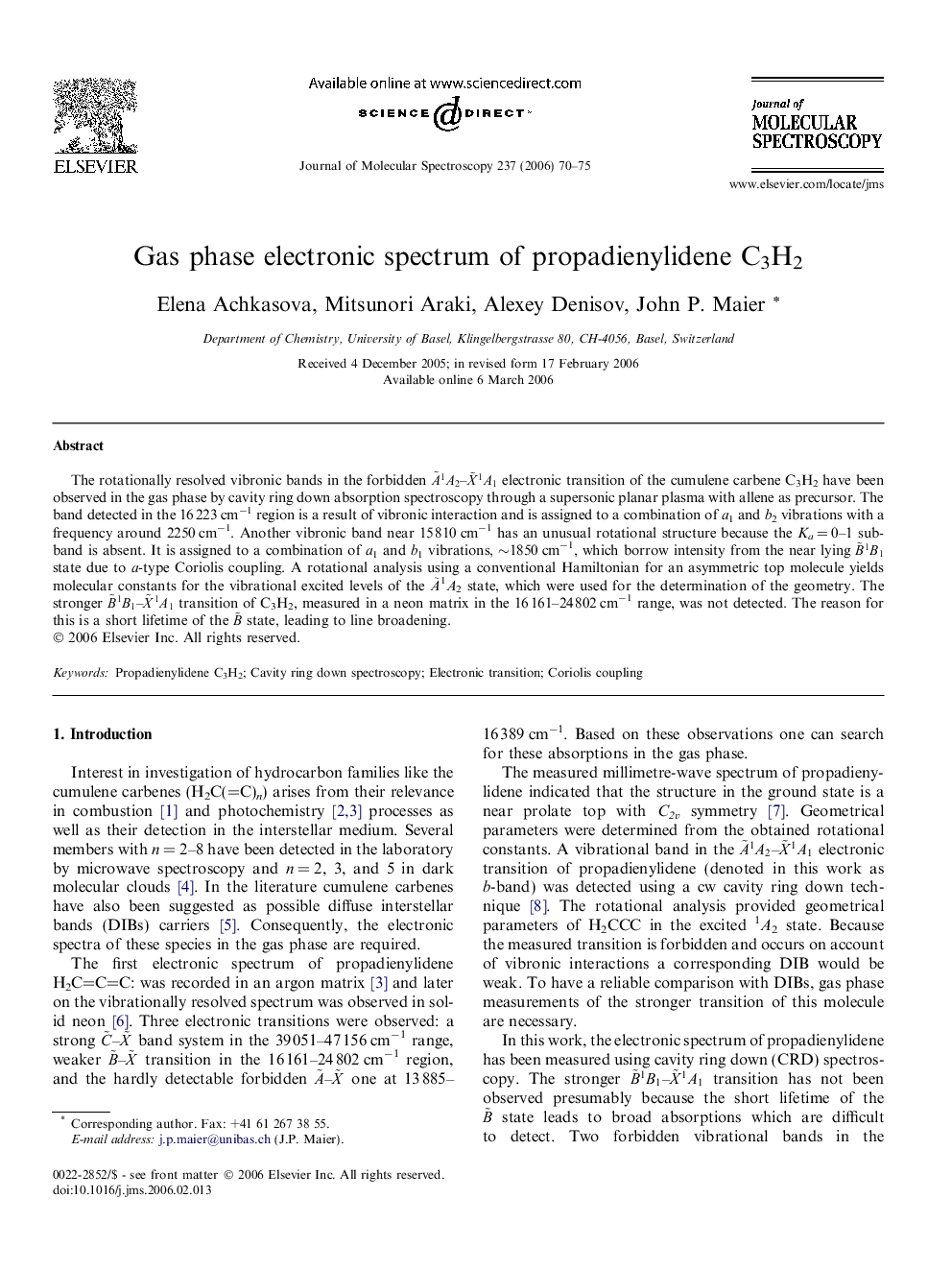| Article ID | Journal | Published Year | Pages | File Type |
|---|---|---|---|---|
| 5416041 | Journal of Molecular Spectroscopy | 2006 | 6 Pages |
Abstract
The rotationally resolved vibronic bands in the forbidden AË1A2-XË1A1 electronic transition of the cumulene carbene C3H2 have been observed in the gas phase by cavity ring down absorption spectroscopy through a supersonic planar plasma with allene as precursor. The band detected in the 16 223 cmâ1 region is a result of vibronic interaction and is assigned to a combination of a1 and b2 vibrations with a frequency around 2250 cmâ1. Another vibronic band near 15 810 cmâ1 has an unusual rotational structure because the Ka = 0-1 subband is absent. It is assigned to a combination of a1 and b1 vibrations, â¼1850 cmâ1, which borrow intensity from the near lying BË1B1 state due to a-type Coriolis coupling. A rotational analysis using a conventional Hamiltonian for an asymmetric top molecule yields molecular constants for the vibrational excited levels of the Ã1A2 state, which were used for the determination of the geometry. The stronger BË1B1-XË1A1 transition of C3H2, measured in a neon matrix in the 16 161-24 802 cmâ1 range, was not detected. The reason for this is a short lifetime of the BË state, leading to line broadening.
Related Topics
Physical Sciences and Engineering
Chemistry
Physical and Theoretical Chemistry
Authors
Elena Achkasova, Mitsunori Araki, Alexey Denisov, John P. Maier,
